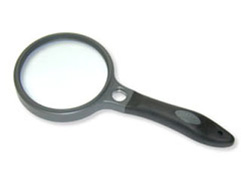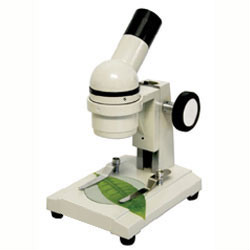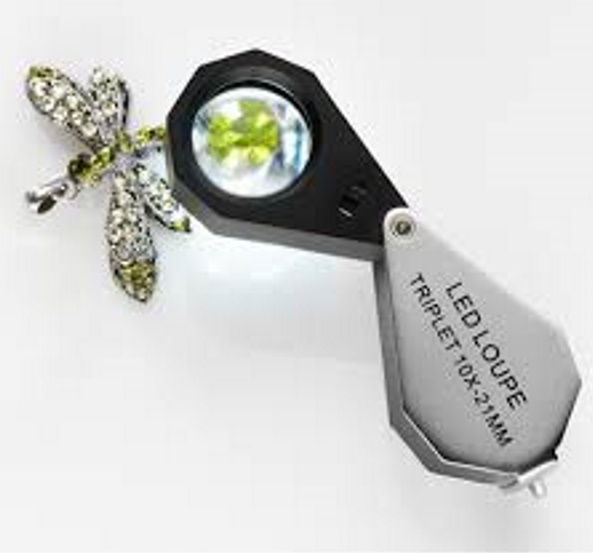1) Did you know that if your eyes can only focus to within about 6″ in front of them? Anything closer will be blurry. If your eyes could focus you would not need magnifiers!
2) Magnifiers, sadly, are perhaps the optical product most likely to be abused with false specifications. Many imported magnifiers will list much higher magnifications that they are actually producing. They aren’t bad magnifiers, but they are listed incorrectly all too often. Buyer beware!
3) A simple rule: The higher the magnification, the smaller the lens on the magnifier will be. The smaller the lens, the closer it will need to be to what you are viewing! In other words, if you have a 10 power magnifier, it will be fairly small in diameter and will need to be very close to whatever you are viewing to properly focus.
4) Magnifiers can have glass or plastic lenses when they are large. Glass is heavy but durable. Plastic is lighter but can scratch easily.
5) Your magnifier can act as a little projector of sorts – if you have a bright window you can make an image of what is outside that window by holding the lens a little bit away from a wall on a darker area of the room.
6) Although almost all lenses used in magnifiers are Double-Convex Lenses (but see below), there is a design called a Fresnel Lens that uses ridges in a plastic sheet to magnify.
7) Some more advanced magnifiers use combinations of lenses, usually 2 or 3, to make the magnified image. The image is usually much better with these lenses than with a single lens. Especially at higher powers. Magnifiers that use 2 combined lenses are called Doublets, while those that use 3 are called Triplets.
8) Some designs of magnifiers are becoming obsolete – there used to be a whole class of magnifiers designed to examine film negatives in their reduced state. With the advent of digital photography they are no longer needed. Mind you, there is also a class of magnifier called a ‘Linen Tester’ that should also be obsolete but found a market in publishing and other fields.
9) There is some overlap where magnifiers should leave off and microscopes should take over. Although they are two different designs optically they tend to overlap in magnifications from  10x-20x. Per fact #2 you should be wary of any magnifier that claims to give microscope range magnifications.
10x-20x. Per fact #2 you should be wary of any magnifier that claims to give microscope range magnifications.
10) Yes, you can concentrate light through a magnifier to light a campfire, but it needs to be decently sized! You need a lot of surface area of light to concentrate for it to work. A pair of reading glasses won’t work and glasses for people who are nearsighted are the wrong type of lens.

